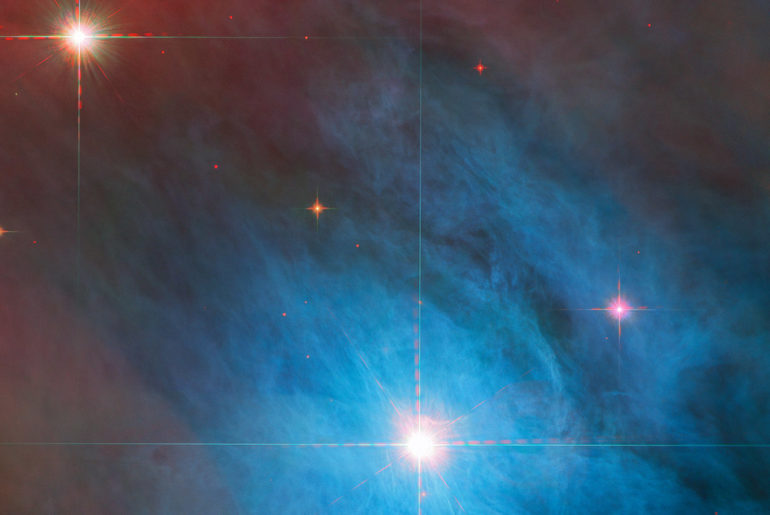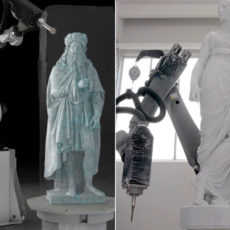
NASA / ESA’s Hubble Space Telescope captured young variable stars in the Orion Nebula, located approximately 1,450 light-years from Earth. V 372 Orionis is the brightest young variable star in this image, classified as an Orion Variable, and experiences vast changes in luminosity due to growing pains.

This image is actually an overlay of data from two of Hubble’s instruments, the Advanced Camera for Surveys and Wide Field Camera 3 at infrared as well as visible wavelengths. The data was layered to reveal the intricate details of this corner of the Orion Nebula. Hubble also left its own touch in the form of diffraction spikes surrounding the bright stars, both of which can easily be seen here.
- POWERFUL REFLECTOR TELESCOPE: The Celestron AstroMaster 114EQ Newtonian telescope is a powerful and user-friendly reflector telescope. It features...
- NEWTONIAN REFLECTOR OPTICAL DESIGN: With a 114mm aperture, the AstroMaster 114EQ can gather enough light to see our Solar System and beyond. View...
- EASY TO SET UP AND USE: This is a great telescope for kids and adults to use together. It features a manual German Equatorial mount for smooth and...
The four spikes around the brightest stars in this image form when an intense point source of light, such as starlight, interacts with the four vanes inside Hubble that support the telescope’s secondary mirror. The diffraction spikes of the NASA/ESA/CSA James Webb Space Telescope, on the other hand, are six-pointed due to Webb’s hexagonal mirror segments and 3-legged support structure for the secondary mirror,” said the agency.







